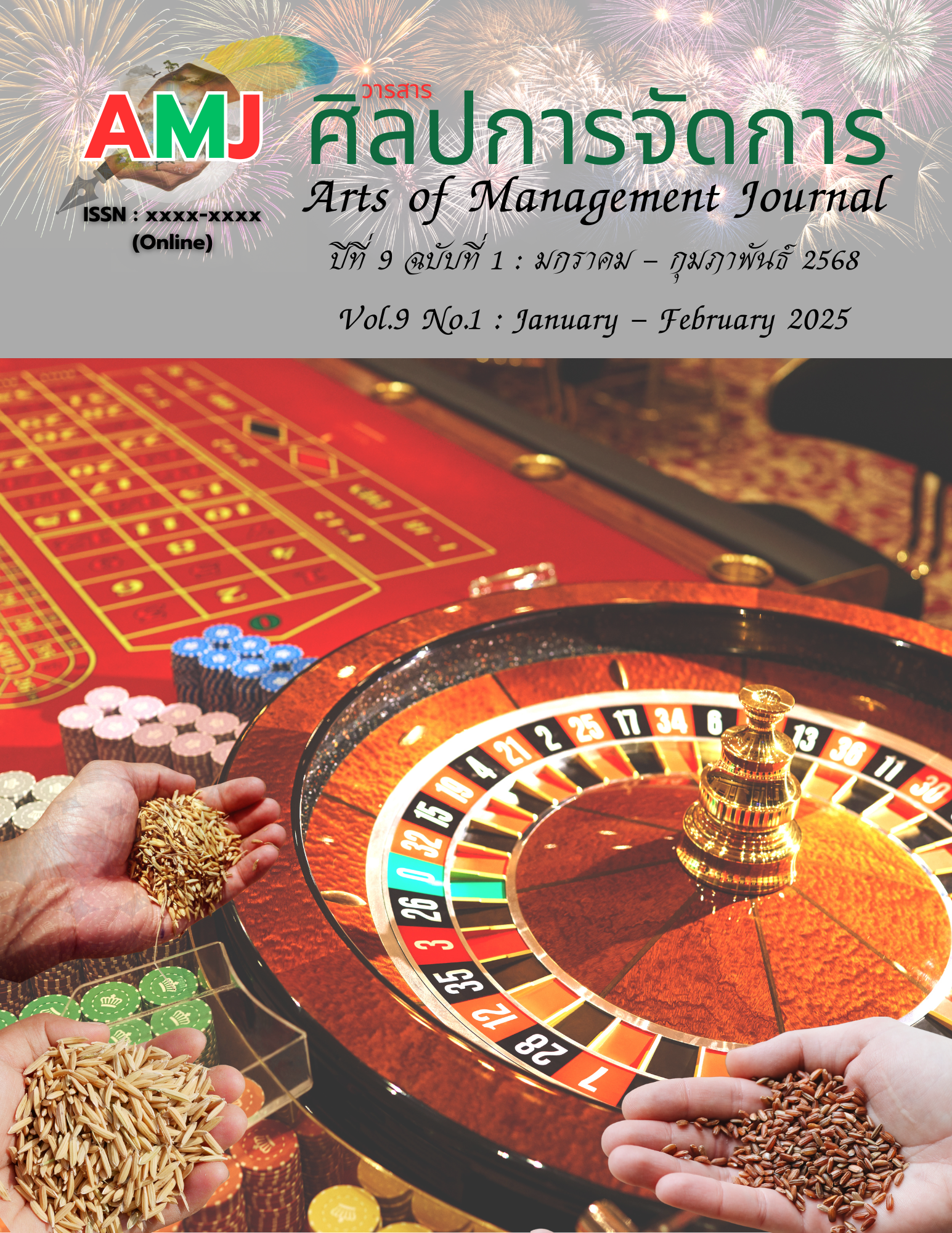Potential of Glass in Abstract Expression: Space and Material Substance
Main Article Content
Abstract
This article presents the various potentials of glass in expressing abstract concepts in Zen art, particularly in its representation of tranquility and emptiness, by analyzing the materials and processes used in four artworks created by four artists. Findings suggest:
1) Glass functions as a medium of sound, which leads the audience to examine their mind by listening to the resonance before eventually discovering that the sound does not originate in the atmosphere but internally in the observer's mind. This phenomenon can be found in the sound installation ‘Chozumaki’ by Nelo Akamatsu. 2) Using glass in traditional ink-wash painting within abstract expression has demonstrated that it is an ideal medium for capturing a specific moment. This highlights its potential in Zen storytelling, which mainly depicts a state of serenity, as seen in ‘Non-Calligraphy’ by Wang Qin. 3) Studying in-depth Chinese ink brush painting, drawing lines on the glass along with disciplined meditation has demonstrated the movement of energy in the glass – a phenomenon that magnifies the concept of emptiness in Zen, for example, in ‘Ghost’ by Ayako Tani and ‘The Glass Circles’ by Sunny Wang. These artists have demonstrated that glass can be a medium of peace and space, encouraging viewers to self-reflect and enhance their awareness within the art's portrayed space. As a result, the artists’ souls are interconnected with those of the audience.
Article Details

This work is licensed under a Creative Commons Attribution-NonCommercial-NoDerivatives 4.0 International License.
Views and opinions appearing in articles in the Journal of Arts of Management It is the responsibility of the author of the article. and does not constitute the view and responsibility of the editorial team I agree that the article is copyright of the Arts and Management Journal.
References
Akamatsu, N. (2016). Chozumaki, sound installation 2016. http://www.neloakamatsu.jp/works/works_chozumaki-eng.html
Cousins, M. (1995). Twentieth century glass. Grange Books.
Holmes, S., & Horioka, C. (2536). Zen art for meditation, (translated) Laoshi. Dokya.
Isavorapant, C. (2021). The origin of natural and dry landscape gardens and the relationship with architecture and painting. Silpa Bhirasri Journal of Fine Arts, 9(1), 19-60. https://so02.tci-thaijo.org/index.php/jfa/article/view/246763
Isavorapant, C. (2024). Makha Waree: Japanese architecture, painting, and garden in Zen viewpoint. Thaweewat.
Jianpinidnun, A (2023). From white painting to silent piece: interaction between concepts and inspiration of art and music. Silpa Bhirasri Journal of Fine Arts, 10(2), 12-41. https://so02.tci-thaijo.org/index.php/jfa/article/view/258434
Lefteri, C. (2004). Glass: materials for inspirational design. Rotovision.
Qin, W. (2005). Non-Calligraphy 1. https://bentleygallery.com/unique/wang-qin
Shibata, K. (n.d.). Circle ink on paper, Edo Period, 19th century. Wikipedia. https://en.wikipedia.org/wiki/Kanjuro_Shibata_XX
Silanoi, L. (1989). Zengai the Zen Master (translated). SueSajja.
Tani, A. (2019). Calligraphic glass: making marks with glass. Arts, 8(1), 12. https://doi.org/10.3390/arts8010012
Toyo, S. (1495). Haboku Sansui Splashed-Ink Landscape 1495. Wikipedia. https://en.wikipedia.org/wiki/Haboku_sansui
Zerwick, C. (1980). A short history of glass. Coming Museum of Glass.


